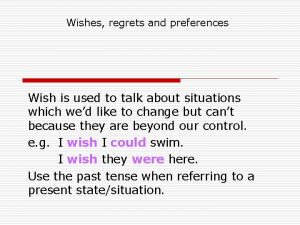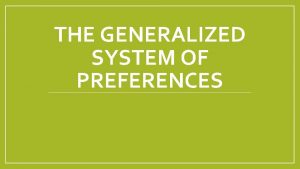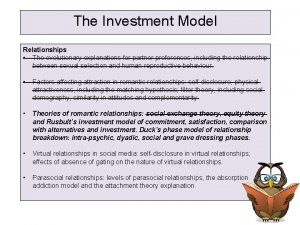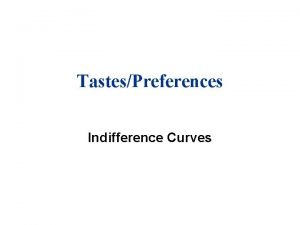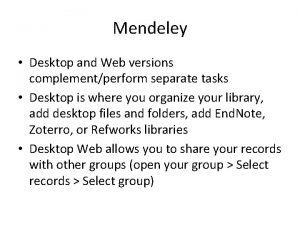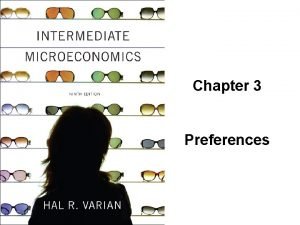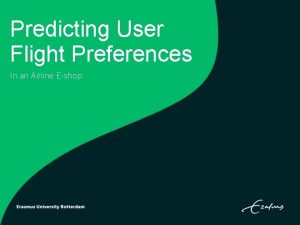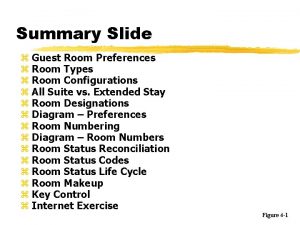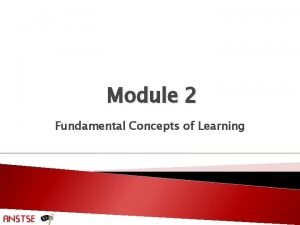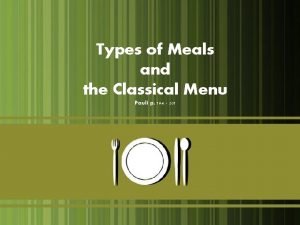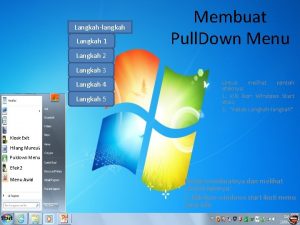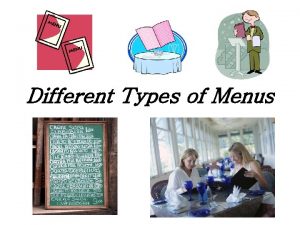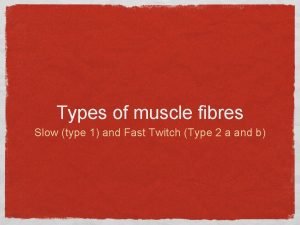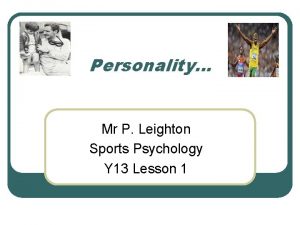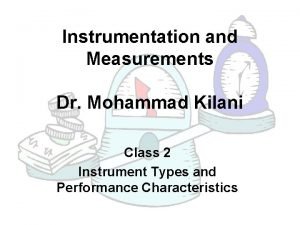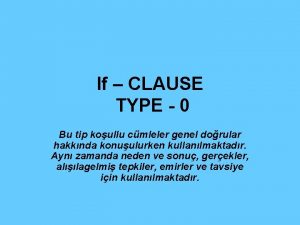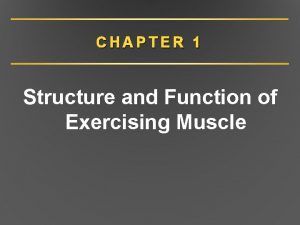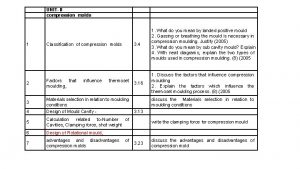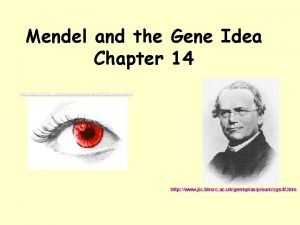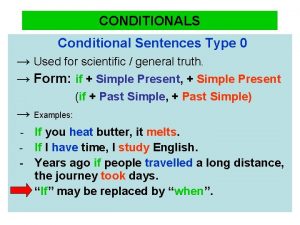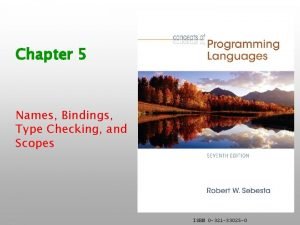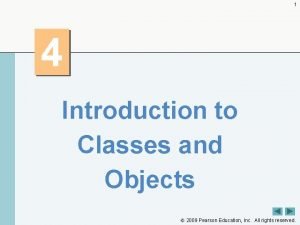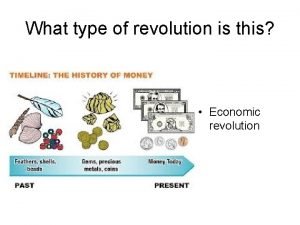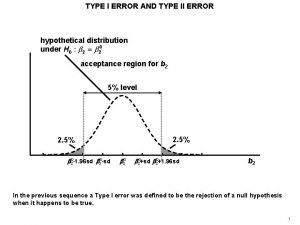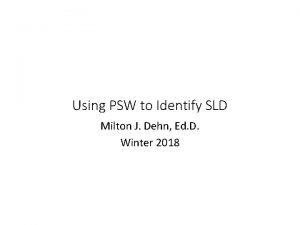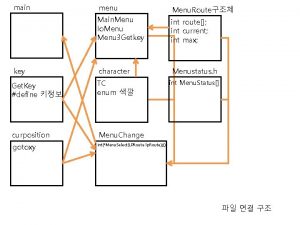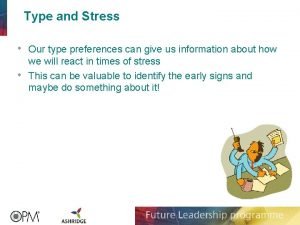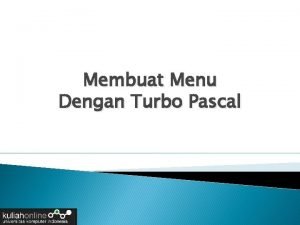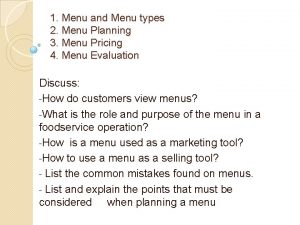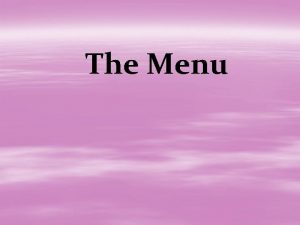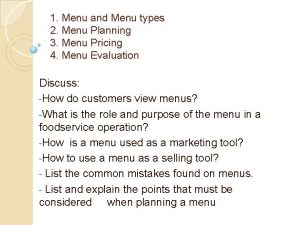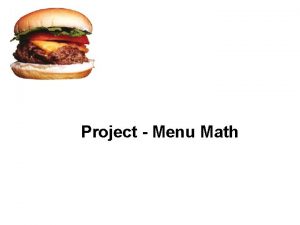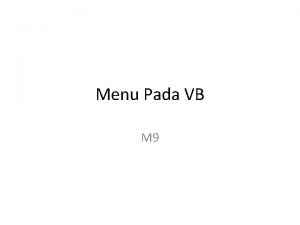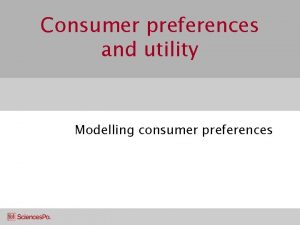MENU Introduction Psychological Preferences Introduction Type Dynamics Psychological




























































- Slides: 60

MENU Introduction Psychological Preferences Introduction Type Dynamics Psychological Preferences Function Pairs Type Dynamics Type Indicator Function Pairs Skill Development Type Indicator Bibliography

The Myers-Briggs Type Indicator (MBTI) is a psychometric assessment…

…which determines how people interact with the world around them.

A Brief History: 1929 -40 s: Isabel Briggs Myers, Katharine’s daughter, helps out with her mother’s research 1913: Carl Jung introduced his typology theory at the Munich Psychological Congress 1917 -40 s: Katharine Briggs researched personality, and developed a four-type framework based on Jung’s typology theory 1942: The "Briggs-Myers Type Indicator" was created

The MBTI is often used in… • pedagogy • counseling (career, marriage, etc. ) • professional development • personal development • and more

Why Myers-Briggs? • I took a couple of free tests online a few years ago • The results were surprisingly accurate • It provoked my curiosity, but I had never taken the time to understand it until now

MENU Introduction Psychological Preferences Introduction Type Dynamics Psychological Preferences Function Pairs Type Dynamics Type Indicator Function Pairs Skill Development Type Indicator Bibliography

There are Eight psychological preferences which are split into four pairs of dichotomies. Extroversion Introversion Sensing i. Ntuition Thinking Feeling Judging Perceiving A person’s type is made of the four letters which represent their preference in each dichotomy.

Extroversion vs Introversion Source of Mental Energy A preference for introversion indicates that the person naturally focuses on their internal world, and gains energy from their own interests, thoughts, ideas, and imagination. A preference for extroversion indicates that the person naturally focuses on the external world, and gains energy from socializing, participating in activities, excitements, etc.

Sensing vs i. Ntuition Method of Retention If sensing is preferred, the person understands and stores information in a sequential, factual, and detailed manner. They work best with sensory details of the present reality. 1 2 3 4 +1 = 4 is thus the greatest # 4 3 2 1 If intuition is preferred, the person understands and stores information in patterns which explain the “big picture” of a concept. They work best with information from which one may imagine multiple interpretations.

Thinking vs Feeling What Influences Decisions Preferring thinking implies that the person makes decisions based on information which they have analyzed in an objective manner. Personal issues have no real weight in the decision-making process. Preferring feeling suggests that the person makes decision based on their own values and biases. They are subjective, and personal issues, including those of others, have weight in their decisionmaking.

Judging vs Perceiving Timing of Actions One who prefers judging is very planned and prepared. They avoid stress using timemanagement and frequently use deadlines and routines to organize a schedule for tasks. GOAL If you have time, here is a funny video which explains this concept in detail. GOAL One who prefers perceiving is very adaptable and is receptive to sudden changes in their surroundings ; they will multitask or pause a project out of the blue if a sudden opportunity for action arises. An approaching deadline will stimulate maximum efficiency.

MENU Introduction Psychological Preferences Introduction Type Dynamics Psychological Preferences Function Pairs Type Dynamics Type Indicator Function Pairs Skill Development Type Indicator Bibliography

Type dynamics describe how the four preferences of a person’s MBTI type work together. E/I S/N T/F J/P Sensing, intuition, thinking, and feeling are mental functions; they are used for perception and judgment. Although each type only shows two of these functions, a person of any type will use all four, however in a specific order of preference: Dominant>Auxiliary>Tertiary>Inferior Extroversion, introversion, judging, and perceiving are attitudes; they affect the structure and focus of one’s life. Attitudes determine the order and orientation (inner vs outer world) of the mental functions.

Dominant and Auxiliary Functions The dominant function is one’s most developed function. Extroverts use it in the external world, and introverts use it in the internal world because those are their preferred orientations. The auxiliary function is one’s second most used function, and balances the dominant function; if the dominant is S or N, the auxiliary must be T or F.

Dominant and Auxiliary Functions For example, if the auxiliary function is T or F, it will help dominant S or N, used for taking in information, make a decision. If S and N were both dominant and auxiliary, one would hardly be capable of making a decision, only taking in new information. Furthermore, if the dominant function is extroverted, the auxiliary must be introverted, and vice versa; having preferences in both worldly orientations is a necessity.

How Attitudes Determine Dominance Preferred Judging or Perceiving is always extroverted. T and F are methods of decision-making, which ties them closely to the judging attitude. E&J Dom: T or F I&J Dom: S or N An ENTJ will have dominant T because they prefer Judging, and their dominant function is extroverted. An INTJ would not have dominant T because they prefer the inner world, meaning that their dominant function is introverted. Again, because preferred attitudes are always extroverted, and the INTJ prefers judging over perceiving, T must be the auxiliary function, which is extroverted.

How Attitudes Determine Dominance Preferred Judging or Perceiving is always extroverted. S and N are methods of taking in information, which ties them closely to the perceiving attitude. E&P Dom: S or N I&P Dom: T or F An ESFP will have dominant S because they prefer perceiving, and their dominant function is extroverted. An ISFP would not have dominant S because they prefer the inner world, meaning that their dominant function is introverted. Again, because preferred attitudes are always extroverted, and the ISFP prefers perceiving over judging, S must be the auxiliary function, which is extroverted.

Tertiary and Inferior Functions The tertiary is the opposite of the auxiliary function, and the inferior is the opposite of the dominant function. They do not appear in one’s type. These functions are underdeveloped and one will have few skills associated with them. If these functions do appear, it is often during times of stress, and not in one’s conscious control. As a result, these functions may occur in immature ways. The development of these functions occurs midlife, when both the dominant and auxiliary are fully developed.

MENU Introduction Psychological Preferences Introduction Type Dynamics Psychological Preferences Function Pairs Type Dynamics Type Indicator Function Pairs Skill Development Type Indicator Bibliography

• • NF warm and enthusiastic focus on ideas and possibilities, particularly for other persons have strong communication skills understanding of others F SF • people-oriented • prefer reality over theory and hands-on approaches • are sympathetic rather than analytical and impersonal N Function Pair: Dominant + Auxiliary S NT • logical and impersonal • focus on possibilities and theories with technical application • prefer analytical approaches T ST • analytical and objective • practical application is more important than theory • prefer taking technical approaches

MENU Introduction Psychological Preferences Introduction Type Dynamics Psychological Preferences Function Pairs Type Dynamics Type Indicator Function Pairs Skill Development Type Indicator Bibliography

Of the ICT skills, I believed that I lacked in Creativity and Innovation, because I had not met the following standard in the “Grade 12 - Look Fors” of the ICT Standards PDF: • Invent a digital learning resource or simulation such as a game, picture book, adventure choice, terminology rolodex (e. g. , presentation, animation, simulation creation, mind mapping, programming software) This Power. Point is a digital learning resource. Besides its menu, it also incorporates a very interactive segment: the Mini Type Indicator, which is meant to very broadly simulate the actual Myers Briggs Type Indicator.

Other requirements from the “Grade 12 - Look Fors” of the ICT Standards PDF which this Power. Point meets are as follows: • Digitally photograph and/or create digital images incorporating text using presentation software • Create a podcast, digital presentation, e. Portfolio, or webpage • Create new ideas, products, or processes using a combination of technologies To elaborate on the last “Look For”, I used both Power. Point and Photoshop to create this Power. Point. Photoshop was necessary for a multitude of the images, beyond the backgrounds, used in this Power. Point.

I am particularly proud of my backgrounds. The purpose of the Power. Point was in my mind while I created them: • The design is simple, with the letters used in MBTI types at the tops and the bottoms of the slides, in order not to distract from the information on them. • The gradients allow for fluid movement between slides; for once I used dynamic transitions which were not just fades, without taking away from the professionalism of the Power. Point.

MENU Introduction Psychological Preferences Type Dynamics Function Pairs Type Indicator Skill Development Bibliography

Type Indicator Disclaimer: This is an extremely simplified version of the Myers. Briggs Type Indicator, and thus is not 100% accurate. It forces the taker to choose between a mutually exclusive dichotomy, when most people fall in a spectrum of the two options. This test is meant to give the taker an idea of what type they may be. Be sure to click on the underlined text of each button, not the background of the text!

Extrovert or Introvert? An extrovert… An introvert… • feels energized through interaction with others • feels refreshed with an adequate amount of alone time • is inspired by their environment, people and things • is inspired internally; has a dynamic mind that is closed off to others • takes action quickly • reflects for a while prior to taking action • prefers to have a lot of associates for variety and change I am an Extrovert • prefers communication with one person at a time, and relations with few at a time I am an Introvert

Turn Back! Use buttons to get to the next slide, not the arrow keys.

Sensing or i. Ntuition? A person who prefers sensing… A person who prefers intuition… • uses past experiences to imagine how things will turn out • remembers the past and facts with great detail • likes concise, factual information, dislikes theory • uses common sense to create solutions • puts focus on their present surroundings • uses theoretical understanding to guide quick decision making • remembers patterns, relationships, and scenarios/conditions • is capable of working with ambiguous information to make inferences • uses imagination to create other alternatives/options to a problem • focuses on the future I prefer Sensing I prefer i. Ntuition E

Sensing or i. Ntuition? A person who prefers sensing… A person who prefers intuition… • uses past experiences to imagine how things will turn out • remembers the past and facts with great detail • likes concise, factual information, dislikes theory • uses common sense to create solutions • puts focus on their present surroundings • uses theoretical understanding to guide quick decision making • remembers patterns, relationships, and scenarios/conditions • is capable of working with ambiguous information to make inferences • uses imagination to create other alternatives/options to a problem • focuses on the future I prefer Sensing I prefer i. Ntuition I

Thinking or Feeling? A person who prefers thinking… A person who prefers feeling… • may be critical due to their ability to notice work to be done • naturally analyzes objectively • sees conflict as a consequence of all relationships • makes decisions using facts and logic I prefer Thinking • sensitive to other’s needs • prefers taking the side where most people put their interest • avoid conflict and disharmony • makes decisions based on the impact it will have on others I prefer Feeling I N

Thinking or Feeling? A person who prefers thinking… A person who prefers feeling… • may be critical due to their ability to notice work to be done • naturally analyzes objectively • sees conflict as a consequence of all relationships • makes decisions using facts and logic I prefer Thinking • sensitive to other’s needs • prefers taking the side where most people put their interest • avoid conflict and disharmony • makes decisions based on the impact it will have on others I prefer Feeling I S

Thinking or Feeling? A person who prefers thinking… A person who prefers feeling… • may be critical due to their ability to notice work to be done • naturally analyzes objectively • sees conflict as a consequence of all relationships • makes decisions using facts and logic I prefer Thinking • sensitive to other’s needs • prefers taking the side where most people put their interest • avoid conflict and disharmony • makes decisions based on the impact it will have on others I prefer Feeling E N

Thinking or Feeling? A person who prefers thinking… A person who prefers feeling… • may be critical due to their ability to notice work to be done • naturally analyzes objectively • sees conflict as a consequence of all relationships • makes decisions using facts and logic I prefer Thinking • sensitive to other’s needs • prefers taking the side where most people put their interest • avoid conflict and disharmony • makes decisions based on the impact it will have on others I prefer Feeling E S

Judging or Perceiving? A person who prefers judging… A person who prefers perceiving… • plans in detail before performing multiple tasks • stays ahead of due dates; works best without stress • due dates and routine are used to plan their life • focuses on responsibilities first; work now, play later • prefers multitasking • comfortable with stress; approaching deadlines result in their best work • do not like their freedom restricted, and thus dislike inflexible plans • likes to plan during work, not prior to it I prefer Judging I prefer Perceiving E S F

Judging or Perceiving? A person who prefers judging… A person who prefers perceiving… • plans in detail before performing multiple tasks • stays ahead of due dates; works best without stress • due dates and routine are used to plan their life • focuses on responsibilities first; work now, play later • prefers multitasking • comfortable with stress; approaching deadlines result in their best work • do not like their freedom restricted, and thus dislike inflexible plans • likes to plan during work, not prior to it I prefer Judging I prefer Perceiving E S T

Judging or Perceiving? A person who prefers judging… A person who prefers perceiving… • plans in detail before performing multiple tasks • stays ahead of due dates; works best without stress • due dates and routine are used to plan their life • focuses on responsibilities first; work now, play later • prefers multitasking • comfortable with stress; approaching deadlines result in their best work • do not like their freedom restricted, and thus dislike inflexible plans • likes to plan during work, not prior to it I prefer Judging I prefer Perceiving E N T

Judging or Perceiving? A person who prefers judging… A person who prefers perceiving… • plans in detail before performing multiple tasks • stays ahead of due dates; works best without stress • due dates and routine are used to plan their life • focuses on responsibilities first; work now, play later • prefers multitasking • comfortable with stress; approaching deadlines result in their best work • do not like their freedom restricted, and thus dislike inflexible plans • likes to plan during work, not prior to it I prefer Judging I prefer Perceiving E N F

Judging or Perceiving? A person who prefers judging… A person who prefers perceiving… • plans in detail before performing multiple tasks • stays ahead of due dates; works best without stress • due dates and routine are used to plan their life • focuses on responsibilities first; work now, play later • prefers multitasking • comfortable with stress; approaching deadlines result in their best work • do not like their freedom restricted, and thus dislike inflexible plans • likes to plan during work, not prior to it I prefer Judging I prefer Perceiving I N F

Judging or Perceiving? INT A person who prefers judging… A person who prefers perceiving… • plans in detail before performing multiple tasks • stays ahead of due dates; works best without stress • due dates and routine are used to plan their life • focuses on responsibilities first; work now, play later • prefers multitasking • comfortable with stress; approaching deadlines result in their best work • do not like their freedom restricted, and thus dislike inflexible plans • likes to plan during work, not prior to it I prefer Judging I prefer Perceiving I N T

Judging or Perceiving? ISF A person who prefers judging… A person who prefers perceiving… • plans in detail before performing multiple tasks • stays ahead of due dates; works best without stress • due dates and routine are used to plan their life • focuses on responsibilities first; work now, play later • prefers multitasking • comfortable with stress; approaching deadlines result in their best work • do not like their freedom restricted, and thus dislike inflexible plans • likes to plan during work, not prior to it I prefer Judging I prefer Perceiving I S F

Judging or Perceiving? IST A person who prefers judging… A person who prefers perceiving… • plans in detail before performing multiple tasks • stays ahead of due dates; works best without stress • due dates and routine are used to plan their life • focuses on responsibilities first; work now, play later • prefers multitasking • comfortable with stress; approaching deadlines result in their best work • do not like their freedom restricted, and thus dislike inflexible plans • likes to plan during work, not prior to it I prefer Judging I prefer Perceiving I S T

You are an INTP! Read More Here! Back to Menu

You are an INTJ! Read More Here! Back to Menu

You are an INFJ! Read More Here! Back to Menu

You are an INFP! Read More Here! Back to Menu

You are an ISFP! Read More Here! Back to Menu

You are an ISFJ! Read More Here! Back to Menu

You are an ISTJ! Read More Here! Back to Menu

You are an ISTP! Read More Here! Back to Menu

You are an ESTP! Read More Here! Back to Menu

You are an ESTJ! Read More Here! Back to Menu

You are an ESFJ! Read More Here! Back to Menu

You are an ESFP! Read More Here! Back to Menu

You are an ENFP! Read More Here! Back to Menu

You are an ENFJ! Read More Here! Back to Menu

You are an ENTJ! Read More Here! Back to Menu

You are an ENTP! Read More Here! Back to Menu

Bibliography Apostolova-Gilbert, V. , & Papulkas, K. (n. d. ). TDSB ICT Standards. Retrieved January 7, 2015, from http: //idcict. mscuttle. com/wpcontent/uploads/2013/09/TDSB ICT_Standards_Bookmarked. pdf Myers Briggs Type Indicator Explanation. (n. d. ). Retrieved December 16, 2014, from http: //www. dec. co. th/mbti_explanation. htm Myers-Briggs Type Indicator - MBTI - Target Training Gmb. H. (n. d. ). Retrieved December 16, 2014, from http: //www. targettraining. eu/myers-briggs-type-indicatormbti/ The Myers & Briggs Foundation - MBTI® Basics. (n. d. ). Retrieved December 13, 2014, from http: //www. myersbriggs. org/mymbti-personality-type/mbti-basics/ The Personality Page. (n. d. ). Retrieved December 15, 2014, from http: //www. personalitypage. com/html/index. shtml Back to Menu
 Examples of policy claims
Examples of policy claims Wishes preferences and regrets
Wishes preferences and regrets Peck's theory of ego integrity
Peck's theory of ego integrity Platform for privacy preferences project
Platform for privacy preferences project Gsp wto
Gsp wto Career choices and preferences in hrm
Career choices and preferences in hrm Tisc
Tisc Evolutionary psychology
Evolutionary psychology Well-behaved preferences examples
Well-behaved preferences examples Mendeley desktop preferences
Mendeley desktop preferences Icwa placement preferences
Icwa placement preferences Well-behaved preferences
Well-behaved preferences Seas application impact statement example
Seas application impact statement example How do you save panel locations and visibility preferences?
How do you save panel locations and visibility preferences? Flight preferences
Flight preferences Guest room preferences
Guest room preferences Rfc 4191
Rfc 4191 Learning preferences
Learning preferences Contoh standar menu
Contoh standar menu Menu menu pada microsoft excel
Menu menu pada microsoft excel Difference between classical menu and modern menu
Difference between classical menu and modern menu Ikon mozilla firefox
Ikon mozilla firefox Langkah menu
Langkah menu Different types of menus
Different types of menus Group dynamics definition
Group dynamics definition Smoke exhaust
Smoke exhaust French classical menu example
French classical menu example Buffet froid course
Buffet froid course Is hyper v type 1 or type 2
Is hyper v type 1 or type 2 Order of recruitment of muscle fiber types
Order of recruitment of muscle fiber types Type 1 or type 2 error statistics
Type 1 or type 2 error statistics Type 2 vs type 1 error
Type 2 vs type 1 error Rock cycle
Rock cycle Narrow band theory in sport
Narrow band theory in sport Sublimation defense mechanism
Sublimation defense mechanism Myotonic dystrophy type ii
Myotonic dystrophy type ii Deflection type instruments
Deflection type instruments ıf clause type 1 exercises
ıf clause type 1 exercises Define testing of hypothesis
Define testing of hypothesis Null hypothesis
Null hypothesis Type checking in compiler construction
Type checking in compiler construction A and b blood type offspring
A and b blood type offspring Type 1 vs type 2 fibers
Type 1 vs type 2 fibers Type 2 hit
Type 2 hit Bulk factor in compression moulding
Bulk factor in compression moulding Blood type and body type
Blood type and body type Pot type mold & plunger type mold are the classification of
Pot type mold & plunger type mold are the classification of Condition type 0
Condition type 0 Name type compatibility and structure type compatibility
Name type compatibility and structure type compatibility Difference between linear beam tube and cross field tube
Difference between linear beam tube and cross field tube O type microwave tubes
O type microwave tubes Reference type and value type
Reference type and value type Type type revolution
Type type revolution What is the probability of making a type 1 error
What is the probability of making a type 1 error Bunch type groundnut
Bunch type groundnut Type a type b
Type a type b Dehn psw model
Dehn psw model Iq test score range
Iq test score range Misic psychological test
Misic psychological test Psychological harassment
Psychological harassment Linear model of communications
Linear model of communications

